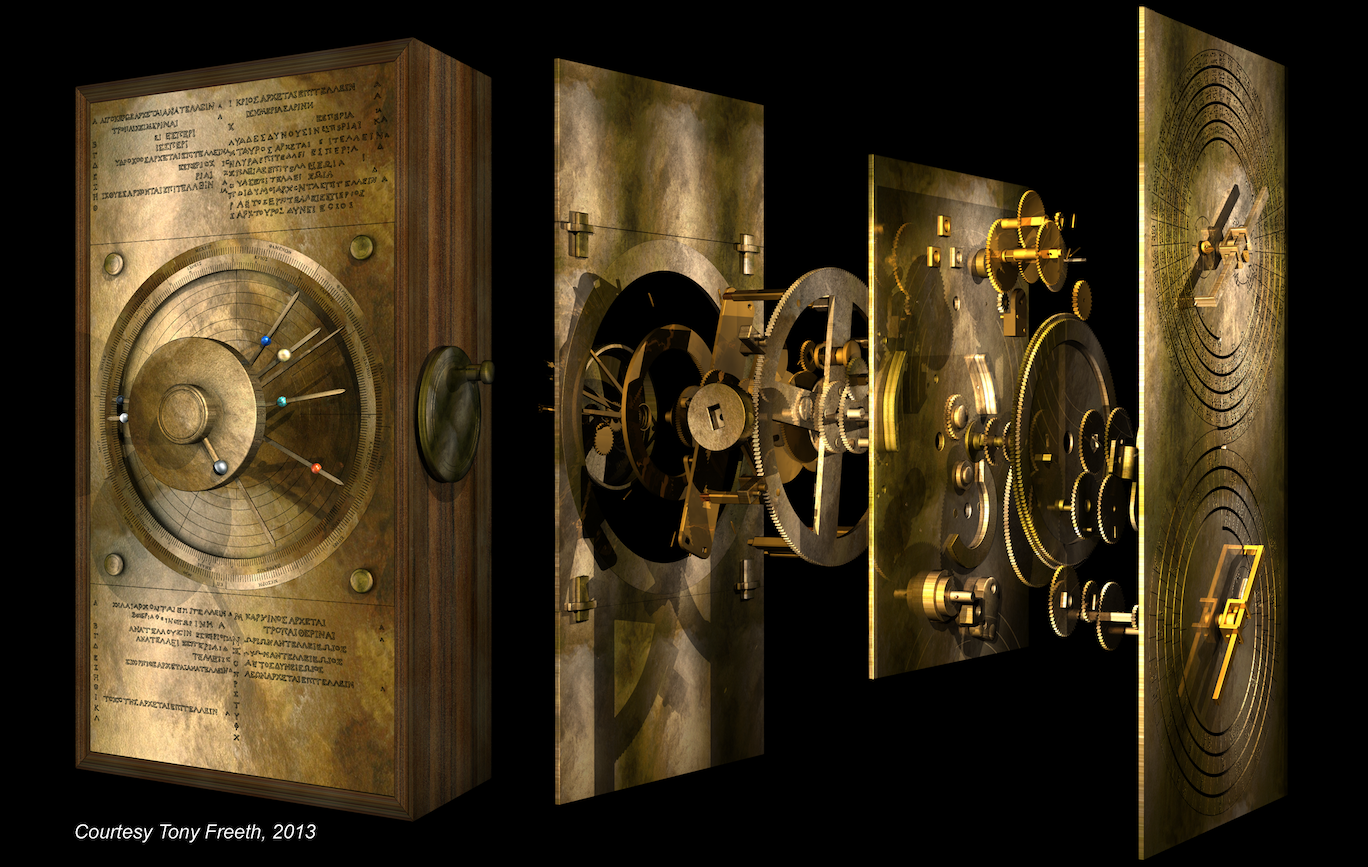The first computer
21 Oct 2019
In 1900 a group of sponge divers found an ancient Roman shipwreck in the waters off the Greek island of Antikythera. The wreck, dated to around 60 BC, had some interesting statues, coins, pottery, and a blob of badly-corroded bronze gears.
An archaeologist studying the blob in 1902 said “Hey guys! This thing has gears!”
Other scholars said “Sorry, not possible,” so the blob sat on a shelf for another fifty years until it piqued the curiosity of Yale professor Derek J. de Solla Price. He studied the device and concluded it was the first known analog computer. The computer, now called the Antikythera mechanism, was the size of a shoe box, contained thirty bronze gears, and was built around 205 BC. It calculated the position of the planets, the moon, and the dates of eclipses. It was a clockwork computer built 1,300 years before Europe rediscovered how to build clockwork mechanisms.

You entered a date into the computer using a crank and the gears would calculate:
- Positions of the sun, moon, and planets.
- Phase of the moon.
- Times of upcoming eclipses to an accuracy within one hour using the Saros Cycle discovered by Babylonian astronomers.
- Dates of upcoming Olympic games which were determined by phases of the moon.
The computer was so advanced it added one day to the calendar every four years even though leap years weren’t part of the Julian calendar yet.
It is a bit frightening to know that just before the fall of their great civilization the ancient Greeks had come so close to our age, not only in their thought, but also in their scientific technology.
Derek J. de Solla Price, Professor, Yale University
References
Freeth, Tony. Eclipse Prediction on the Ancient Greek Astronomical Calculating Machine Known as the Antikythera Mechanism. PLoS ONE 9(7): e103275, 2014.
Freeth, Tony, et al. “Decoding the Antikythera Mechanism: Investigation of an Ancient Astronomical Computer.” Nature, Volume 444, Issue 7119, 2006, pp. 587-591.
Price, Derek John de Solla. “An Ancient Greek Computer.” Scientific American, June 1959, pp. 60-67.